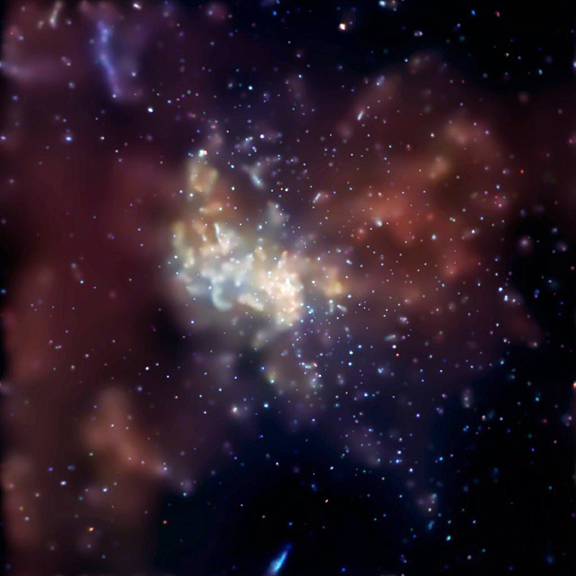 X-Ray view of the galactic centre
X-Ray view of the galactic centre
Launched in 1999, the Chandra X-ray Observatory has given us our most detailed x-ray views of the universe yet.
This is x-ray view of the region around the 3 million solar mass black hole, Sgr A*, at the centre of the Milky Way. This image was captured in an exposure that lasted two weeks.
During the exposure, the region around the black hole flared up weakly in X-rays around half a dozen times. The outbursts occurred near the event horizon, the surface past which no matter can return from the black hole.
The weakness of the flares suggests that Sgr A* is a starved black hole. Data in this image indicate that enormous explosions have occurred several times in the last ten thousand years. These explosions may have cleared much of the gas from around Sgr A*.
Chandra may help us understand how the black hole at the center of our galaxy grows and interacts with its environment. This will help us understand how the even larger black holes in other galaxies form and grow.